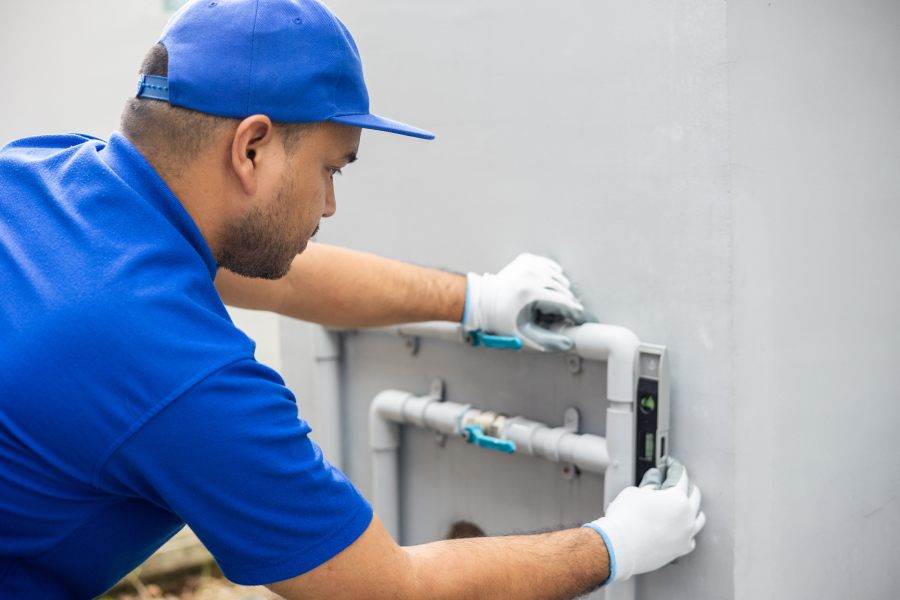Water, essential for life, can also be a formidable force of destruction when it infiltrates our homes. The aftermath of a flood, a burst pipe, or even a seemingly minor leak can leave homeowners facing a daunting challenge.
Water damage is more than just an unsightly nuisance; it’s a threat to the structural integrity of your property and the health of its occupants. The insidious nature of water damage means it can spread far beyond the visible wet spots, seeping into walls, floors, and furnishings. This causes many to wonder about how to get rid of water damage and can water damage be fixed after all.
Tackling water damage requires swift action, the right tools, and a methodical approach. If left unchecked, it becomes a breeding ground for mold and mildew, potentially leading to serious health issues and costly repairs.
Whether you’re dealing with a recent incident or discovering the effects of long-term moisture exposure, understanding the steps to remediation is crucial. This guide will walk you through the process of restoring your home to its dry, safe state.

How to Get Rid of Water Damage
Assessment and preparation
Initial damage assessment
Before diving into the cleanup process, it’s crucial to assess the extent of the water damage. This step helps you understand the scope of the problem and plan your approach accordingly.
- Identify affected areas – Carefully inspect your property, noting all areas that show signs of water damage.
- Determine the water category – Categorize the water as clean, gray (slightly contaminated), or black (highly contaminated) to guide your cleaning approach.
- Document the damage – Take photos and videos for insurance purposes and to track your progress during restoration.
Safety precautions
Water damage cleanup can be hazardous. Prioritize safety by taking these precautions:
- Turn off electricity – Shut off power to affected areas to prevent electrical hazards.
- Wear protective gear – Use rubber boots, gloves, and a face mask to protect yourself from contaminants and potential mold spores.
- Check for structural damage – Ensure the building is safe to enter before proceeding with cleanup efforts.
Steps to take to remove water damage
1. Identify and stop the water source
The first step in addressing water damage is to locate and stop the source of water. For plumbing issues, turn off the main water supply and repair any leaks to prevent further damage. In the case of flooding, wait for flood waters to recede before implementing prevention measures like drainage improvements.
For roof leaks, use tarps to temporarily cover damaged areas until permanent repairs can be made. Swift action and proper temporary fixes can minimize damage and reduce future risks.
2. Extract standing water
Remove as much standing water as possible to minimize further damage. Use pumps for large volumes of water, especially in basements or ground floors and employ wet-dry vacuums for smaller areas or to remove remaining water after pumping. For minor issues, mops and towels can be effective in soaking up excess water.
3. Dry out affected areas
Thorough drying is crucial to prevent mold growth and further damage. Use dehumidifiers to remove moisture and set up high-powered fans to circulate air. When weather permits, open windows and doors for better ventilation. For severe cases, consider renting industrial-grade drying equipment. Use a moisture meter to monitor indoor humidity, aiming for levels below 50% to prevent mold.
4. Remove damaged materials
Some water-damaged items may be beyond salvage and should be removed. Heavily saturated carpets and padding often cannot be saved and should be disposed of. Similarly, drywall and insulation that show signs of water damage need to be cut out and replaced, as they can harbor mold and compromise structural integrity.
Evaluate wooden furniture for warping or other severe damage, and consider professional cleaning or replacement for upholstered items that may not fully dry. Remember to document all removed items for insurance purposes before disposal.
5. Clean and disinfect
Thorough cleaning and disinfection are essential to prevent mold growth and eliminate harmful bacteria. Start by cleaning hard surfaces with a mixture of water and detergent, ensuring that any visible dirt or grime is effectively removed. After cleaning, apply a disinfectant solution, such as diluted bleach, to sanitize the areas, following the manufacturer’s guidelines for safe and effective use.
Pay special attention to porous materials, as they can easily harbor mold spores and require careful treatment. Once cleaning and disinfection are complete, allowing surfaces to dry completely is crucial, as lingering moisture can contribute to mold growth. If you encounter extensive contamination or black water damage, it may be best to hire professional cleaning services to ensure thorough remediation and safety.
6. Restore and repair
The final step involves restoring your property to its pre-damage condition. Begin by repairing or replacing any damaged structural elements, such as flooring, walls, and ceilings, to ensure the integrity of your home is reinstated. It’s also crucial to address any electrical issues that may have arisen from water exposure, as these can pose safety risks if left unresolved.
Once structural and electrical repairs are completed, you can move on to aesthetic improvements, such as repainting walls and refinishing floors as necessary to restore the appearance of your space. Additionally, any damaged fixtures, cabinets, or other built-in elements should be replaced to complete the restoration process. For complex restoration projects, it is advisable to consult with licensed contractors who can ensure that the work is done properly and in compliance with building codes.

Conclusion
Addressing water damage promptly and effectively is crucial for maintaining the safety, integrity, and value of your home. By following these steps – from initial assessment and water extraction to thorough drying, cleaning, and restoration – you can mitigate the impact of water damage and prevent secondary issues like mold growth.
Remember, the key to successful water damage removal lies in quick action and thorough execution. While minor incidents may be manageable as DIY projects, severe water damage often requires professional intervention.
Don’t hesitate to call in experts for complex situations, especially when dealing with contaminated water or extensive structural damage.
By understanding the process of how to get rid of water damage and acting swiftly, you can protect your home from long-term consequences and ensure a safe, healthy living environment for you and your family.
